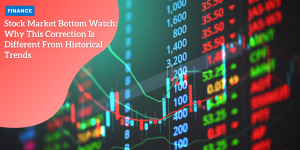Wall Street’s Turning Point: How Earnings Season and Trade Developmeants Lifted Markets

Market Rally: A Dramatic Turnaround
Wall Street experienced a dramatic turnaround as U.S. stocks rebounded significantly on April 22, 2025.
Anúncios
All three major indexes climbed over 2.5%, showcasing robust investor confidence and optimism.
The Dow Jones Industrial Average soared by 1,016.57 points (2.66%), closing at 39,186.98.
The S&P 500 made impressive gains of 129.56 points (2.51%), landing at 5,287.76, while the Nasdaq Composite surged by 429.52 points (2.71%) to reach 16,300.42.
Anúncios
Broad-Based Gains Across Sectors
Significantly, all 11 major sectors within the S&P 500 saw advances during this period. Leading the charge were the financials and consumer discretionary sectors.
This sector-wide improvement indicates a broad-based rally where gains were not limited to just a few industries but were seen across the board.
Driving Factors Behind the Rally
Several factors contributed to this remarkable market recovery.
Anúncios
Positive quarterly earnings played a crucial role in boosting investor sentiment.
A spate of earnings reports exceeded market expectations, helping to bolster confidence.
Additionally, anticipation that U.S.-China trade tensions might ease added to the optimistic outlook.
President Trump’s assurances against firing Federal Reserve Chair Jerome Powell further invigorated the market, highlighting Powell’s role as a stabilizing force.
Detailed Market Activity
The trading activity also painted a positive picture. On the NYSE, advancing issues outnumbered decliners by a ratio of 6.4-to-1.
This trend was mirrored on the Nasdaq, where advancing issues outnumbered decliners by a 4.5-to-1 ratio.
Although the trading volume of 15.21 billion shares was below the 20-day average of 18.94 billion, it was still a substantial figure, indicating healthy market activity.
Despite the rally, it’s worth noting that the S&P 500 remained nearly 14% below its record high from February 19, signifying that while the market showed signs of recovery, complete normalization was still on the horizon.
This period marked a pivotal turning point for Wall Street, driven by earnings success and political developments, leading to a wave of optimism among investors.

Earnings Season Success: Companies Beat Expectations
Positive Earnings Reports Drive Market Gains
The recent earnings season has brought a wave of good news for investors, with 73% of S&P 500 companies surpassing analyst expectations.
This robust performance has significantly contributed to the market rally, as evidenced by the impressive gains across the major indexes.
Aggregate Earnings Growth
Despite initial forecasts predicting an aggregate earnings growth of 12.2% for Q1 2025, the actual growth rate settled at a solid 8.1% .
This discrepancy highlights the cautious optimism among market participants, acknowledging the challenging economic landscape shaped by ongoing tariff impacts and trade uncertainties.
Standout Performers and Struggling Giants
Among the notable performers, 3M has emerged as a true standout.
The industrial conglomerate’s shares jumped 8.1% after the company reported better-than-expected profits for the first quarter of 2025.
This strong performance underscores 3M’s resilience and strategic management during turbulent times.
However, the earnings season also revealed significant struggles for certain companies impacted by tariffs.
Northrop Grumman saw its shares plummet by 12.7% following a sharp drop in profit, illustrating the severe effects tariffs can have on corporate earnings.
Similarly, RTX warned of a potential $850 million hit to its annual profit due to tariffs, leading to a 9.8% tumble in its share prices.
Broad-Based Market Gains
The positive earnings reports have had a ripple effect across the market, pushing all 11 major sectors of the S&P 500 into the green.
Leading the charge were the financials and consumer discretionary sectors, which experienced the largest percentage gains.
This sector-wide advancement paints a picture of broad-based optimism among investors, fostering a more positive market sentiment.
As we continue to monitor the evolving economic landscape, the tension between short-term market gains and long-term uncertainties remains a crucial aspect to watch.
Tariff Impacts: Winners and Losers
Despite the market’s broad gains in recent sessions, the impact of tariffs on some companies has created clear winners and losers.
While many businesses thrived during the rally, others flagged significant concerns regarding tariffs.
Significant Hits for Northrop Grumman and RTX
While the market overall showed impressive gains, Northrop Grumman was notably affected by the ongoing tariff issues.
The company’s shares slumped by a staggering 12.7% following its report of a sharp drop in profits.
Northrop Grumman has been grappling with increased costs due to tariffs, impacting its bottom line significantly.
Similarly, aerospace giant RTX (formerly Raytheon Technologies) took a considerable hit, with shares tumbling 9.8%.
The company warned that tariffs could potentially result in an $850 million reduction in their annual profit.
This substantial figure highlights the severe impact tariffs are having on their operations and profitability.
Winners Amid the Tariff Landscape
Despite these challenges, some companies have managed to navigate the turbulent tariff landscape successfully. 3M, for example, emerged as a standout performer during this period.
The company’s shares jumped 8.1% after it exceeded profit expectations for the quarter. 3M’s ability to operate efficiently despite tariff pressures showcases its resilience and strategic management.
Although the company did flag potential hits to its 2025 profit due to tariffs, its strong performance in Q1 demonstrates its adaptability in a challenging environment.
Broader Market Impact
The broader market reflected mixed sentiments towards tariffs.
While several sectors showed resilience and growth, the tariff concerns couldn’t be ignored.
The financials and consumer discretionary sectors led the gains among the S&P 500’s 11 major segments, showcasing the varied impact of tariffs across different industries.
Though the market celebrated overall advances, the stark contrast in performance among individual companies underscores the selective nature of tariff impacts.
With investors looking for signs of change in trade dynamics, the next steps in tariff negotiations and broader economic policies remain crucial.
This phase of cautious optimism is poised to shape trading activities and market sentiment in the short term.
This extensive split between winners and losers within the market paves the way for an in-depth examination of political developments and their influence on trade tensions in the next chapter.
The landscape of tariffs and trade talks continues to evolve, leaving investors to closely watch for any shifts in the geopolitical arena.
Trade Tensions Easing: Political Developments
President Trump’s Tariff Strategy
Recent developments in U.S.-China trade relations have brought a wave of optimism to investors.
In a significant announcement, President Trump revealed that tariffs on Chinese imports would fall significantly following an upcoming trade deal.
While tariffs won’t drop to zero, the reduction is expected to ease some of the financial burdens on companies that have been grappling with higher costs.
Treasury Secretary’s Take
Treasury Secretary Steven Mnuchin provided further insights into the ongoing negotiations, highlighting that discussions with Beijing are likely to be “a slog.”
Despite the expected difficulties, Mnuchin believes the tensions will eventually de-escalate, providing a glimmer of hope for the markets.
This sentiment was echoed by Chief Market Strategist Ryan Detrick, who noted that the easing of aggression between the U.S. and China has been a positive driver for the markets.
Market Sentiment Boost
The prospect of reduced tariffs and a more stable trading relationship with China has significantly boosted market sentiment.
Investors are eagerly watching for positive developments, as evidenced by the S&P 500 futures jumping nearly 2% following Trump’s comments.
Major tech stocks like Amazon, Nvidia, and Apple also saw notable gains in after-hours trading.
Broader Impact on Global Trade
These political developments are not only influencing U.S. markets but are also being closely watched by the global trading community.
The anticipation of reduced trade tensions is creating a more favorable environment for international business, which had been under strain due to the prolonged trade disputes.
This potential easing of tariffs is a welcome development for many sectors that have been hit hard by the increased costs of imported goods.
Looking Ahead
As political negotiations continue, the market remains cautiously optimistic. Investors are hoping for a resolution that will benefit both nations and stabilize the global economy.
This optimism is a crucial factor in driving the recent market rallies, despite underlying economic uncertainties.
The chapter closes with a brief transition hinting at continued market volatility and the need for investor vigilance without explicitly mentioning the next chapter.
Federal Reserve Stability: Trump’s Reassurance
Trump Backs Powell: Market Rejoices
Amidst the buzz of earnings season and easing trade tensions, the market received another shot in the arm from President Trump.
In an unexpected yet welcomed move, Trump assured the public that he had no plans to remove Federal Reserve Chair Jerome Powell.
For many investors, this reassurance was music to their ears, as Powell is widely seen as a stabilizing force for the volatile market.
The timing of Trump’s statement could not have been better. It coincided with after-hours trading, providing a significant boost to investor confidence.
Immediately following his comments, S&P 500 futures jumped almost 2%.
The surge continued with major tech stocks like Amazon and Apple seeing rises of 3% and 2% respectively in after-hours activity.
The Market’s Immediate Reaction
The market’s reaction was swift and positive.
Investors, already buoyed by positive earnings reports and potential trade de-escalation, found further confidence in the stability that Powell represents.
Powell’s tenure has been characterized by measured economic policies and steady hands, which many investors deemed crucial during turbulent times.
Financials and consumer discretionary sectors once again led the charge, showing robust gains across the board.
The collective sigh of relief from the investor community was palpable, translating into broad-based market gains.
Implications for the Future
This reassurance has broad implications for the future market sentiment.
Stability at the Federal Reserve signals to investors that the economic policies will continue to be predictable and aimed at fostering growth.
The reassurance can help mitigate some of the uncertainties surrounding the market including, but not limited to, volatile tariff policies and the global economic outlook.
This sense of stability is crucial, especially given the IMF’s revised forecast for U.S. economic growth in 2025.
With tariffs at an all-time high, a steady hand at the Federal Reserve can help navigate these choppy waters and potentially cushion the impact of adverse economic indicators.
Transition to Broader Concerns
With the Federal Reserve providing a pillar of stability, the spotlight will now shift back to other pivotal factors influencing the market dynamics such as earnings reports, trade negotiations, and economic forecasts.
The broader trends and their implications will be crucial in understanding and navigating the evolving landscape.
Economic Outlook: IMF’s Revised Forecast
Revised Economic Forecast
The International Monetary Fund (IMF) has recently revised its forecast for U.S. economic growth in 2025.
The new projection estimates growth at 1.8%, a downgrade from previous expectations due to the persisting impact of tariffs.
According to the IMF, these tariffs have now reached 100-year highs, exerting significant pressure on U.S. economic performance.
Impact of Tariffs
The prolonged tariff environment has brought mixed outcomes.
While some industries have adapted, others continue to struggle with increased costs.
For instance, companies such as Northrop Grumman and RTX have reported notable profit declines linked to these tariffs.
The broader market sentiment, while optimistic, plays against this backdrop of economic caution.
Market Sentiment vs Economic Projections
Interestingly, the significant rally in U.S. stocks stands in contrast to the revised economic outlook.
Investors have taken recent earnings season successes and hints at trade de-escalation positively, driving substantial market gains.
However, these upbeat market sentiments are at odds with the underlying challenges posed by high tariffs and a subdued growth forecast.
| 📌 Key Insight | Details |
|---|---|
| 📈 IMF’s Forecast | Economic growth in the U.S. is projected to reach 1.8% in 2025 |
| 💸 Tariff Influence | Tariffs remain elevated and are heavily influencing economic projections |
| 📊 Sentiment Divergence | Market confidence contrasts sharply with cautious economic forecasts |
| 🌐 Overall Outlook | The economic landscape remains complex, with market trends and indicators not always aligned |
Market Sentiment: Investor Response and Trading Activity
Investors responded enthusiastically to the recent earnings reports and potential easing of trade tensions, leading to a decisive rally on Wall Street.
Advancing issues significantly outnumbered decliners by a 6.4-to-1 ratio on the New York Stock Exchange (NYSE) and a 4.5-to-1 ratio on the Nasdaq.
This broad-based rally suggests a robust investor appetite for risk amid positive market signals.
Advancing Issues Dominate
The substantial dominance of advancing issues over decliners underscores the widespread optimism among investors.
On the NYSE, advancing issues outnumbered decliners by a staggering 6.4-to-1 ratio. Meanwhile, on the Nasdaq, the ratio stood at 4.5-to-1, indicating a strong tilt towards buying activity across a diverse range of stocks.
Trading Volume Insights
Trading volume hit 15.21 billion shares, which, while impressive, fell below the 20-day average of 18.94 billion shares.
This lower-than-average volume might suggest that while investor sentiment is positive, some investors remain cautious and are possibly waiting for more concrete developments in earnings and trade negotiations before fully committing additional capital to the market.
S&P 500 Recovery Status
Despite the market’s substantial gains, the S&P 500 is still nearly 14% below its record high from February 19, 2025.
This context is crucial as it highlights that while there is optimism and significant rebound activity, the recovery is ongoing and the index has not yet fully regained its previous peak levels.
These factors illustrate a market that is responding positively to short-term developments while still being mindful of broader economic uncertainties.
The sentiment is one of cautious optimism, with investors keenly observing upcoming corporate guidance and policy updates for a clearer roadmap ahead.





